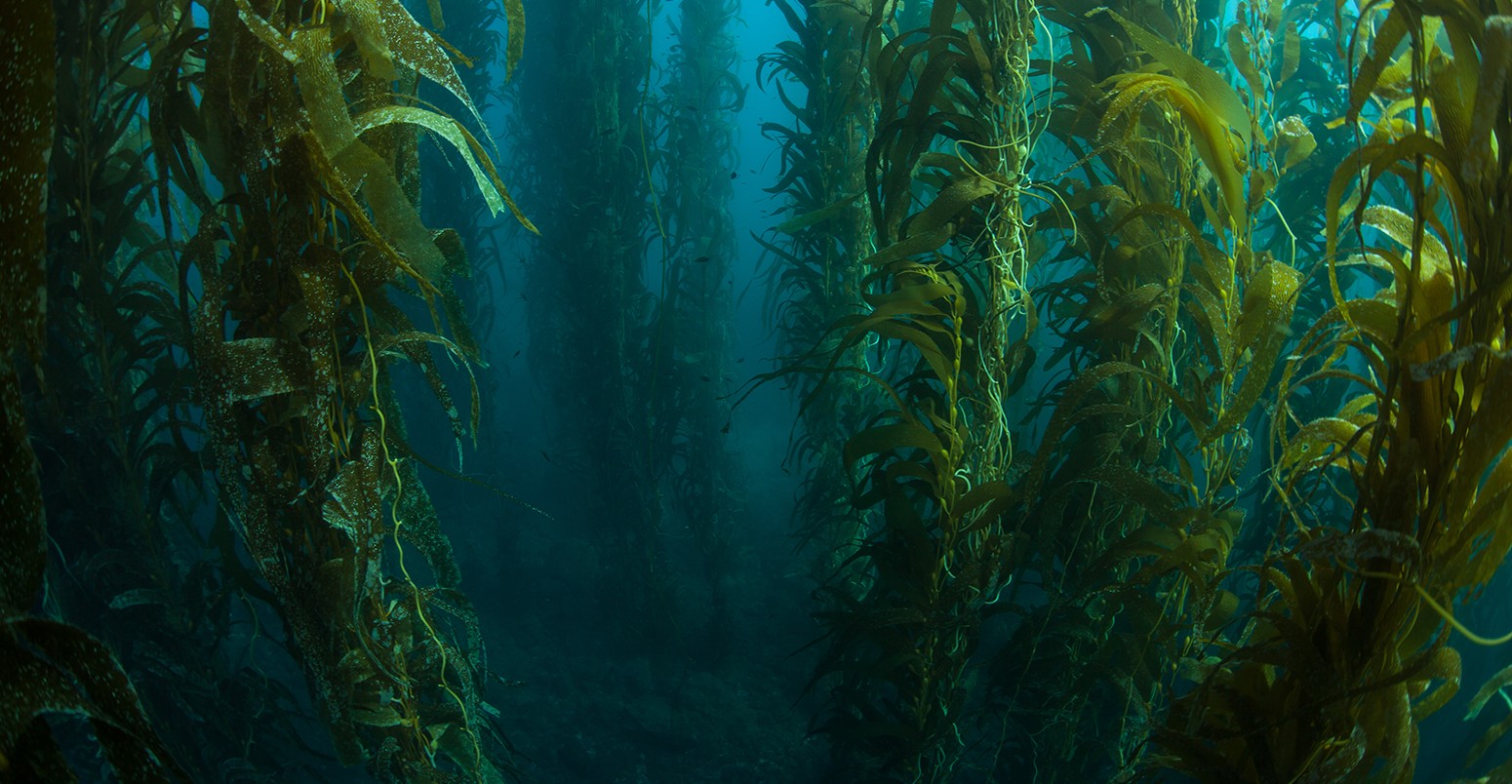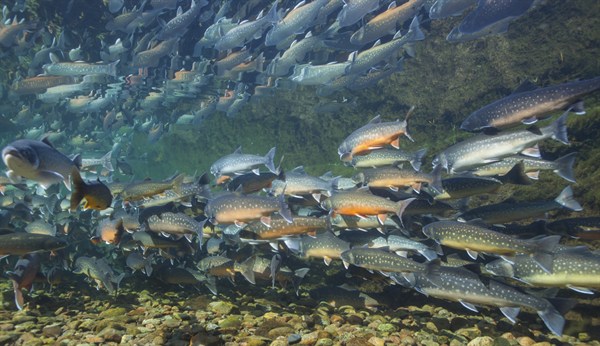
Climate change risks biggest change to marine species in three million years
Multiple Authors
06.01.15Multiple Authors
01.06.2015 | 4:00pmA guest post by Dr Gregory Beaugrand, researcher at the University of Lille Laboratory of Oceanography and Geoscience, and Dr Richard Kirby, research fellow at the Marine Biological Association of the UK.
Humans rely heavily on the world’s oceans. About 70% of the world population lives within 60km of the shoreline, and we catch around 80 million tonnes of fish every year. In our new study, we investigate how warming oceans could affect the spread of marine species.
And the results suggest warming over 2C would have a bigger impact on marine biodiversity than we’ve seen in the last three million years.
Marine biodiversity
We know very little about the many and varied species swimming around in our oceans. Scientists estimate there are around two million different species globally, but so far we have only identified around a tenth of them. This lack of knowledge makes it difficult to predict how climate change could affect marine ecosystems.
But it remains an important challenge.
Until now, attempts to understand the implications of climate change on marine biodiversity have either projected results based on a few key species, or used statistical models to predict the distribution of a species based on different environmental factors.
Both methods are limited by our knowledge of how species are distributed across our oceans. In our study, published today in Nature Climate Change, we take a different approach – using ocean temperatures.
Theoretical species
We use a novel approach based upon the theory that the way biodiversity is distributed in the ocean is based on the temperatures that different species can tolerate and thrive in.
In our ecological model, we created tens of thousands of theoretical species. We gave each species a unique response to ocean temperature and allowed them to colonise the world’s oceans, wherever they found the temperatures were suitable for them.
To make sure our pseudo-global aquarium was realistic, we checked it against observed data for real species, including types of plankton, crustaceans and fish.
Arctic char. Source: Shutterstock
Past, present and future
We ran our model to compare marine biodiversity between the past and present. We used two distinct points in history: the last ice age (around 20,000 years ago) and the mid-Pliocene (around three million years ago).
During the last ice age, global carbon dioxide levels in the atmosphere were around 190 parts per million (ppm) and global temperatures were 3-5C lower than they are today. The mid-Pliocene is a period where conditions – including atmospheric carbon dioxide at about 400 ppm and global temperatures around 2-3C higher than today – closely resemble what some climate models project for later this century.
We then ran our model to see how warming in the future could affect the distribution of marine species by the end of this century. We used four scenarios of climate change – matching the four used by the Intergovernmental Panel on Climate Change – and output from five different climate models.
You can see all of these results in the maps below. On the left-hand side, the maps show ‘quantitative changes’ – the average change in species abundance. The right-hand side maps show ‘qualitative changes’ – the difference between the number of species type that move to the region minus those that move away or die out.
The reds and oranges show the regions of greatest change, while the blues and greens show changes of less than 5% – including negatives.
Overall, we found that 42-94% of the world’s oceans are to see changes in biodiversity of at least 5% (maps a-d), depending on emissions scenario. The changes are most pronounced in the tropics and the polar oceans, but for entirely different reasons.
While the tropics may see an increase in the abundance of a particular species (maps a-d), its diversity will diminish as many species find conditions too warm to remain (maps g-j). In contrast, polar regions will see a large influx of new species seeking cooler temperatures.
Past and future quantitative (left-hand maps) and qualitative (right-hand maps) change in marine biodiversity. Maps on top four rows (a-d and g-j) show difference between projected future (2081-2100) and present (2006-13) under the four emissions scenarios. Maps on bottom two rows show difference between the last glacial maximum (LGM, maps e and k) and 1960-69, and the Mid-Pliocene (maps f and l) and 2006-13. Regions of largest percentage change shown as oranges and reds, and smaller changes as blues and greens. Source: Beaugrand et al. (2015).
Climate change
Under the lowest emissions scenario ( RCP2.6), future global warming by 2100 stays below 2C – the threshold beyond which the international community considers natural systems to be at risk of grave damage.
With this scenario, much of the oceans would see biodiversity changes of 5% or less by the end of the century (maps a and g). Changes for around 25% of the oceans would be of greater magnitude than those between the mid-Pliocene and the present day (maps f and l).
More alarming changes are seen from the other three scenarios. Under RCP4.5 and 6.0, around 28% of the global oceans would see a drop in biodiversity, and between 46% and 51% of the global oceans would see a biodiversity change above what was experienced between the mid-Pliocene and today.
For the emissions scenario with the highest concentrations of carbon dioxide by 2100 ( RCP8.5), biodiversity is projected to diminish in 44% of the global oceans. This translates to climate change having a bigger impact on marine ecosystems in 70% of the world’s oceans than we’ve seen since the mid-Pliocene three million years ago.
Coral reef. Source: Shutterstock
Interactions
Any reorganisation of marine biodiversity will affect us in some way. Our oceans support millions of people around the world, and marine processes are a key part of the carbon cycle, taking carbon dioxide from the atmosphere and storing it in the deep ocean.
Some individual changes might be good, but many will inevitably be bad.
Together, any changes in biodiversity will affect interactions between species and consequently, how the ecosystem functions and how productive it is.
Our results provide evidence that if we can keep global warming below 2C, the effects on marine biodiversity predicted could be manageable. But miss the target, and the consequences for ocean life could be much more severe.
Main image: Giant kelp grows in a thick underwater forest near the Channel Islands in California.
Beaugrand, G. et al. (2015) Future vulnerability of marine biodiversity compared with contemporary and past changes, Nature Climate Change, doi:10.1038/nclimate2650
-
Climate change risks biggest change to marine species in three million years




